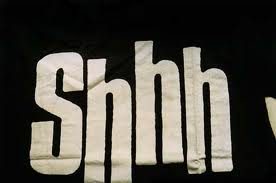We are in the midst of posting on noise, but we can’t talk about noise without including Silence. Brains and Ears are a package deal for perceiving, alerting, attending, and processing auditory input from the world around us. Both are necessary, neither alone is sufficient.
The Model
The neuropsychological top-down model goes like this: too little input to the brain from the ears introduces processing instabilities due to inadequate information and low redundancy. Instability makes the auditory situation unpredictable. The brain reroutes attentional processing resources to interpret perceived inconsistencies and inadequacies and improve predictability. Other processing may get short-changed; cognitive overload is likely. Besides real-time effects of irritability and distractability, long-term neuropsychological changes in brain plasticity may occur.
Uncorrected hearing loss limits input, reduces or distorts auditory information available for processing, and places increased demands on neural networks. Such effects are correlated with more frequent and rapid cognitive decline than is observed in same-age people with good hearing function.

Arthur Schoepenhauer: author of “Studies in Pessimism” and other exciting titles
Noise and Philosophy
If you buy into the model described above and in previous posts, then you’ll probably be willing to buy into the notion that noise itself can pull valuable brain processing resources away from other tasks that we value and protect. This is not a new or original thought. German philosopher Arthur Schopenhauer famously ranted about the attention-splitting effect of noise in his writings, even titling one essay On Noise, and sitting for a portrait (right) while covering one ear.
Schopenhauer’s philosophy was gloomy and Germanic, as was he (see picture). He saw mind and noise juxtaposed in a battle to the death of intellect:
I have long held the opinion that the amount of noise that anyone can bear undisturbed stands in inverse proportion to his mental capacity and may therefore be regarded as a pretty fair measure of it. Schopenhauer, The World as Will and Representation
And if you go along with that, then you’re probably OK with the notion that noisier societies prompt more and varied reactions as those in society strive to control their environments through public policy. And if you go that far, then you are probably also willing to view Quiet as a desirable commodity which can be packaged, sold, and regulated.
Dangers of Over-Theorizing and Regulating
Schopenhauer was not a hearing scientist or neuropsychologist. It’s a good thing he was not put in charge of noise regulation back in the 19th century. Hopefully, you will not go along with Shopenhauer’s half-baked neuropsychology theory of the mind, which used noise as an elitist form of intellectual profiling and predictor of anatomical brain differences:
There are people … who …are not sensitive to noise; but they are just the very people who are also not sensitive to … any kind of intellectual influence. The reason … is that the tissue of their brains is of a very rough and coarse quality.
Thank goodness for microscopes, CT scans, MRIs and modern methods of studying neuroanatomy and neurophysiology to level the playing field when it comes to brain and ears. Thank goodness for personal ear protection and noise-reduction circuitry in hearing aids, which can respectively buy us Silence or Comfort in Noise.
Too bad Schopenhauer couldn’t go to the drugstore, purchase ear protection, and buy Silence. Ear plugs could have changed his entire philosophy of mind and life.
Buying Silence
Audiologists like the idea of turning Silence into an entity, if not a commodity, which we can recommend to patients as an important part of their hearing and auditory processing experiences. That’s not a new thought either.
Next week, we’ll share a random collection of jokes, events, anecdotes, regulations and other evidence in the never ending fight pitting Silence versus Noise. Tickets available online.
title photo courtesy of kipuka







